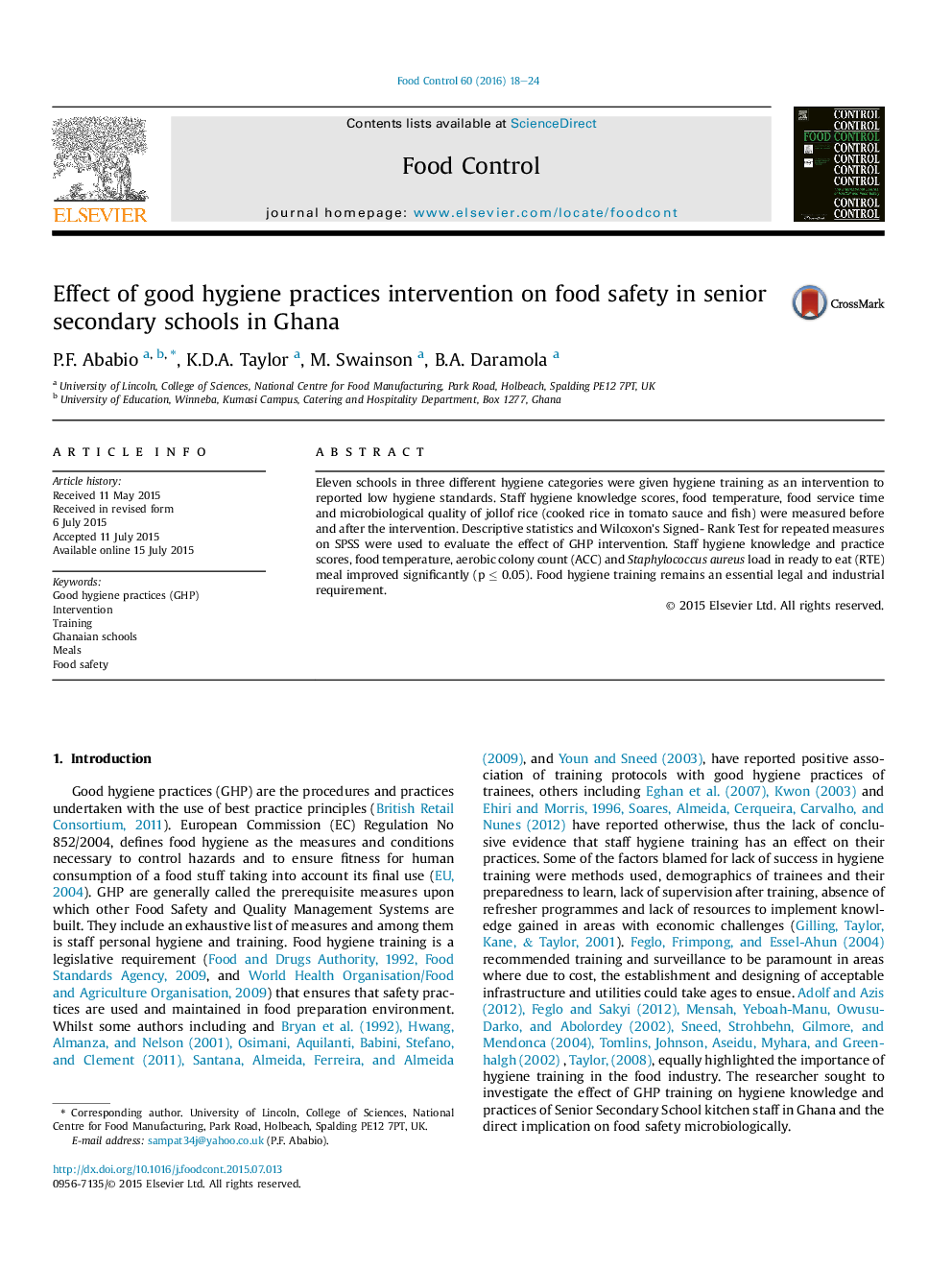| Article ID | Journal | Published Year | Pages | File Type |
|---|---|---|---|---|
| 6390212 | Food Control | 2016 | 7 Pages |
â¢Good hygiene practices intervention in the form of training improved kitchen staff hygiene awareness scores.â¢Staff temperature and time monitoring for ready to eat (RTE) meals significantly improved after training.â¢Microbiological contaminants in RTE meals reduced with a significant reduction in ACC and S. aureus levels after training.
Eleven schools in three different hygiene categories were given hygiene training as an intervention to reported low hygiene standards. Staff hygiene knowledge scores, food temperature, food service time and microbiological quality of jollof rice (cooked rice in tomato sauce and fish) were measured before and after the intervention. Descriptive statistics and Wilcoxon's Signed- Rank Test for repeated measures on SPSS were used to evaluate the effect of GHP intervention. Staff hygiene knowledge and practice scores, food temperature, aerobic colony count (ACC) and Staphylococcus aureus load in ready to eat (RTE) meal improved significantly (p â¤Â 0.05). Food hygiene training remains an essential legal and industrial requirement.
